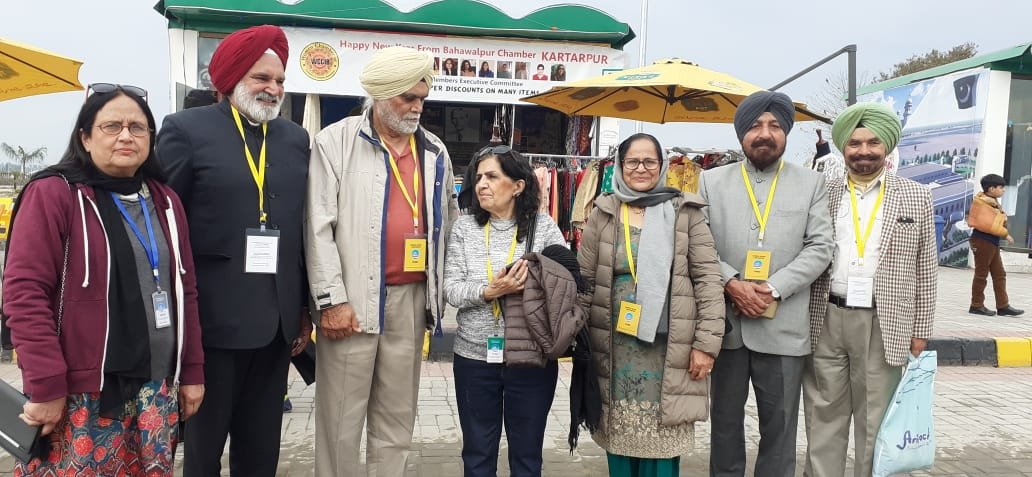
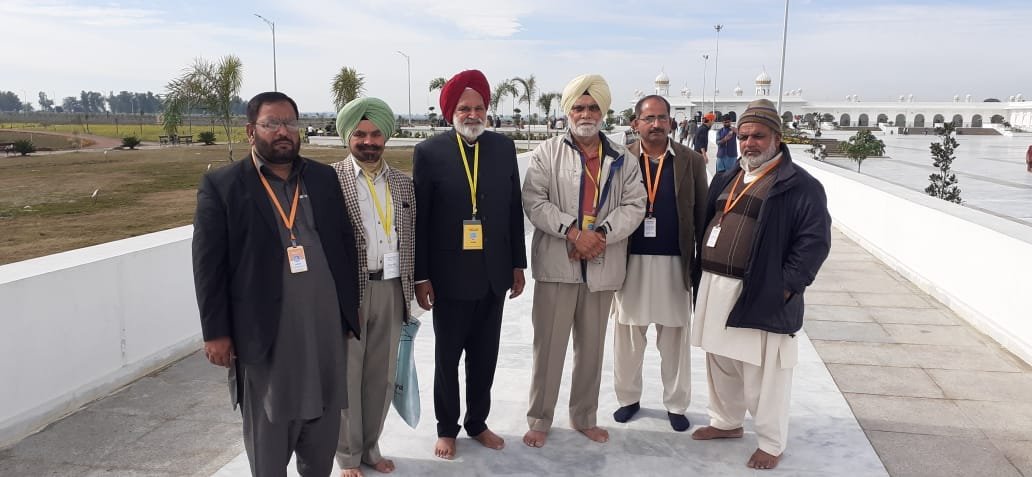
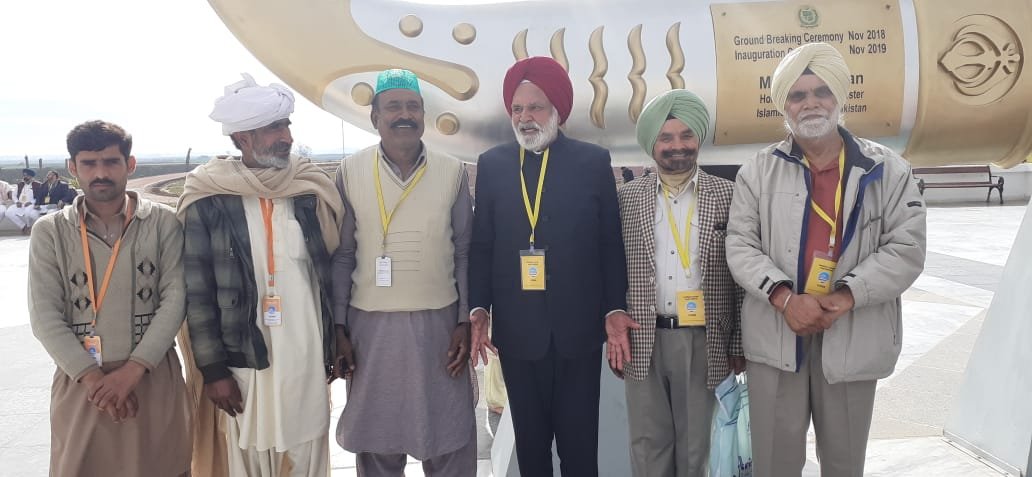
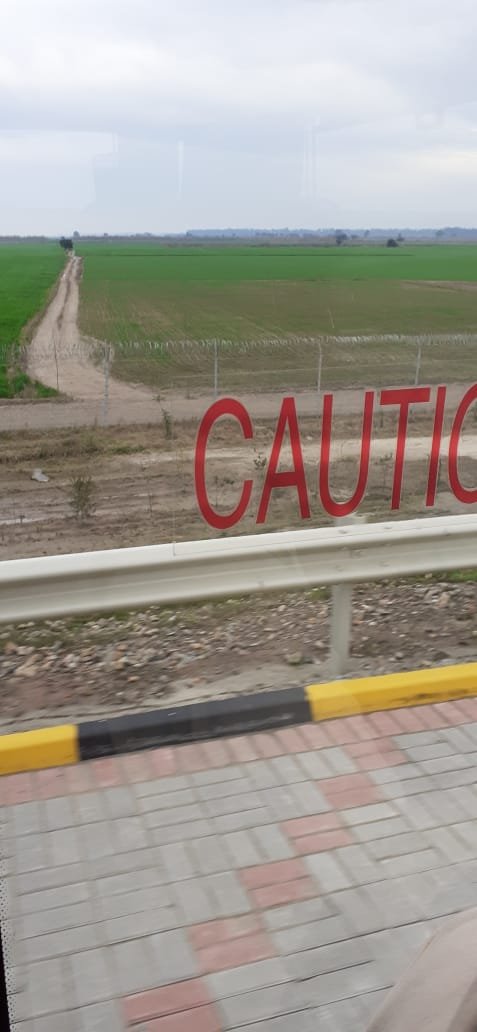
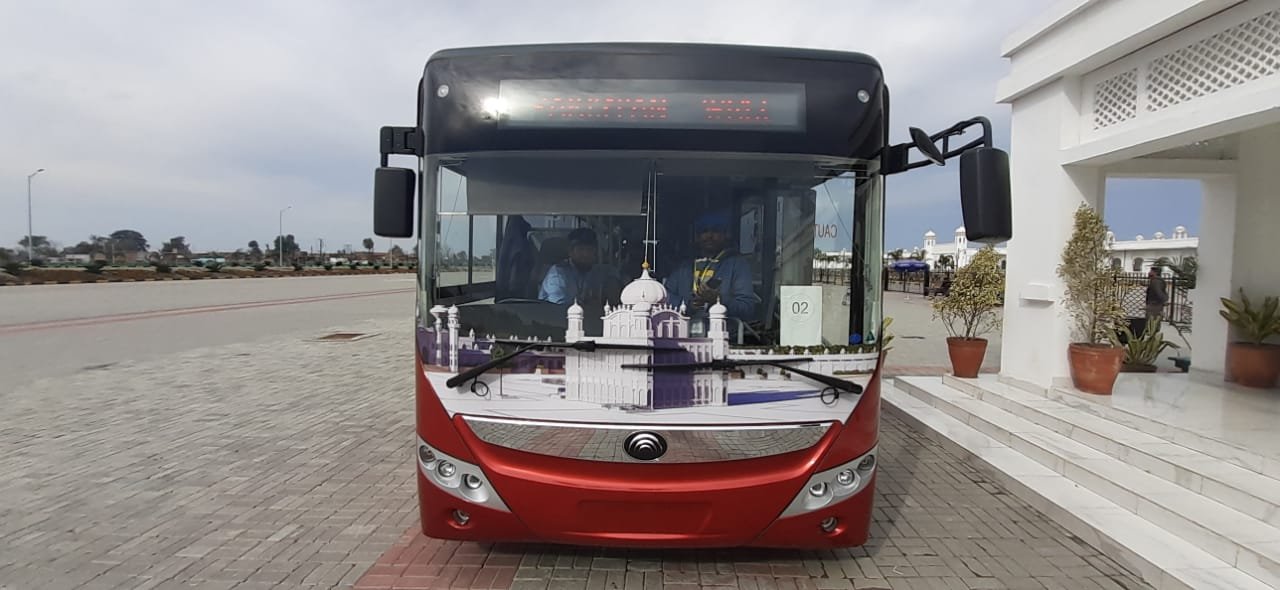















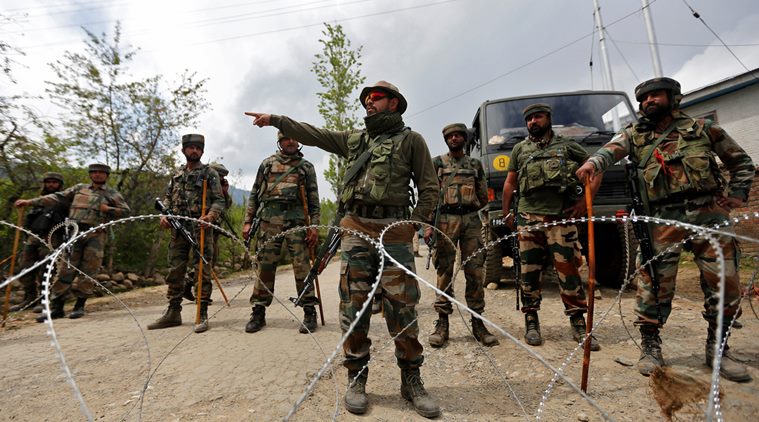
The Army has made a list of its own. When I cross the camp, they tell me it is my turn today. After dropping the passengers, I have to deliver my vehicle in the evening,” one of the drivers told The Indian Express.
Earlier this month, a resident of Aglar village (name withheld by request) in south Kashmir’s Shopian district received a call from an Army officer, asking him to deposit his private vehicle at the local Army camp by evening. The man did that, turning over the car’s keys to Army personnel. Next morning, he collected the car. It had been used during the night.
His is not a one-off case. In at least two villages of Shopian, residents say it has become a regular practice for the Army to call owners of commercial and private vehicles, and use their vehicles at night — for free. Residents have no idea why and for what purpose are the vehicles used.
The Army denies the charge, saying “no civilian is being forced to provide his vehicle”. But in Shopian’s Heerpora, along the Mughal Road, several men claim Army personnel from the camp in Chowgam often stop drivers during the day and direct them to drop their vehicles at the camp in the evening.
“The Army has made a list of its own. When I cross the camp, they tell me it is my turn today. After dropping the passengers, I have to deliver my vehicle in the evening,” one of the drivers told The Indian Express.
In Aglar, residents narrate a similar account, saying they have to deposit their vehicles for the night at the Pahnu camp. The village has even prepared a list of all residents who own private vehicles, including two-wheelers.
“I dropped my vehicle there for a night. Next morning, I went to collect it from the camp. They handed me my vehicle,” a resident said. “Out of fear, I had kept the vehicle registration documents at home and even filled fuel in the car. When I collected it the next day, the reading (on the milometer) was the same, the one I had recorded the previous night.”
Another resident said: “They sometime give us fuel in return… I end up losing money because my car always has enough fuel.”
When The Indian Express started reaching out to officials for comments on the claims of the residents, the drivers too started receiving calls from Army personnel, enquiring who among them had spoken to the media.
While Yaseen Choudhary, Shopian Deputy Commissioner, declined to comment on the matter, the district’s Assistant Regional Transport Officer Moazzam Ali said local taxi operators of Heerpora did not approach him directly.
“When I heard about it, I called them (drivers) and asked why they hadn’t brought it to my notice. They informed me that the Army camp took their commercial vehicles for a few days and gave them only fuel, and no money. They told me that the practice has stopped now. It is not happening now,” Ali said. He said he was not aware of a similar practice in Aglar.
Shopian SSP Sandeep Chaudhary did not respond to written queries from The Indian Express for comment.
Srinagar-based defence spokesperson Colonel Rajesh Kalia rejected the allegations of villagers. “No civilian is being forced to provide his vehicle. If at all, any civil vehicle is hired or used, remuneration is given as per policy. The allegations are baseless,” he said.
 At the SCO, China could muster support to persuade India to soften its stance on Pakistan and Kashmir VIA REUTERS
At the SCO, China could muster support to persuade India to soften its stance on Pakistan and Kashmir VIA REUTERS
Jayadeva Ranade
Within days of the beginning of the new year, China made clear that its attitude towards India will not change. The all-spectrum China-Pakistan compact will stay intact and get further consolidated through closer diplomatic and military coordination. At the same time, China will retain, as cosmetic window dressing, the semblance of cordiality in bilateral relations with India through summits and official-level meetings, which have yielded negligible results. Additionally, there will be the dissimulation that it is under compulsion to support Pakistan. Beijing will simultaneously strive to advance its commercial interests by blending economic incentives with threats, as it has in the case of Huawei and the bid for 5G. Beijing would have interpreted India’s recent decision to allow Huawei to participate in the 5G trials, at the risk of introducing vulnerabilities in national security, as succumbing to China’s pressure.
Just look at three of China’s recent actions. One, Beijing attempted, for the third time in barely five months, to convene a session of the United Nations Security Council (UNSC) to discuss the Kashmir issue. This was blocked by the United States (US), France and Russia and, for the first time in a seeming change of policy, by the United Kingdom. This will not be the last such attempt.
Two, it publicised the first large-scale military exercises in 2020 by Chinese troops in Tibet. Official Chinese media reports — helpfully in English — pointed out that new high-powered weapons suitable for use in high altitudes were used by forces of the Tibet Military Region. The Tibet Military Region is under the direct operational control of the Central Military Commission (CMC) in Beijing headed by Chinese President Xi Jinping.
Three, it held the first nine-day joint “Sea Guardian” exercises with Pakistan in the Arabian Sea, starting on January 6. For the first time, these included warlike air defence systems, anti-missile technology, anti-submarine warfare capabilities, and live-fire and joint marine training drills, as well as submarine rescue and amphibious landing operations by 60 Chinese Marines from the People’s Liberation Army (PLA)’s Southern Theatre Command. The PLA Navy did add the ritual anodyne comment that the exercise “wasn’t targeted at any third party”.
Together, the two sets of exercises reflect the land and sea-based threats to India.
These have been preceded by other statements in China’s official military media that underscore the extent of China-Pakistan cooperation in military matters. Late last year, reports proposed the sale a few years later of China’s first aircraft carrier, the Liaoning, to Pakistan. The discussions suggested that the sale would help rectify the existing imbalance in maritime power between Pakistan and India, be more affordable for Islamabad, and financially benefit China.
Later, following the Indian airstrikes at the Jaish-e-Mohammad terrorist training camp at Balakot inside Pakistan, the Chinese military media reported extensively on the performance of Pakistan Air Force pilots and aircraft. They lauded the performance of the Chinese-made JH-7 jet aircraft, saying its performance would be good for the sales of Chinese military products. At the time, China’s media also discussed further assistance to Pakistan. One suggestion was that China’s air force should position its “electronic” JH-7 jet aircraft on the Sino-Pakistan border to “loan” it quickly to Pakistan when conflict breaks out. The report was recommending deployment of these aircraft in the South Xinjiang Military District, subordinate to the PLA Western Theatre Command, which exercises operational jurisdiction over the areas opposite Ladakh and Pakistan-occupied-Kashmir, Gilgit and Baltistan, and which is tasked to protect the China Pakistan Economic Corridor (CPEC).
China has, since April 2015, when it announced the CPEC, been exerting pressure on India to improve its ties with Pakistan. Beijing has been insisting in official and Track 1.5 and Track-2 discussions that India commence talks and ease tensions with Pakistan, resolve the Kashmir issue, and only then look to improving ties with China. At that time, the CPEC projects were valued at around $49 billion and now they are officially estimated by Pakistan at almost $64 billion. For China, the stakes are undoubtedly high. To increase pressure, China has revived reference to the UNSC resolutions while referring to the Kashmir issue. Beijing has, in the past, referred to UNSC resolutions when its relations with India were under strain.
At this juncture, for India to host a summit of the Shanghai Cooperation Organisation (SCO), which is a China-sponsored and controlled organisation, will afford Beijing another opportunity to exert pressure on India. This time, China could try and muster support from sections of the Indian media, civil society and others to persuade India to soften its stance on Pakistan and Kashmir.
Jayadeva Ranade is a former Additional Secretary, Cabinet Secretariat and is President of the Centre for China Analysis and Strategy
 Adviser to LG Rajiv Rai Bhatnagar and army personnel carry the coffin of slain policeman Shahzad Ahmad during a wreath-laying ceremony in Srinagar on Wednesday. Waseem Andrabi /HT photo
Adviser to LG Rajiv Rai Bhatnagar and army personnel carry the coffin of slain policeman Shahzad Ahmad during a wreath-laying ceremony in Srinagar on Wednesday. Waseem Andrabi /HT photoAshiq Hussain
letters@hindustantimes.com
Srinagar : One militant was killed in a gunfight with security forces at Khrew in south Kashmir’s Pulwama after the operation resumed on Wednesday. The encounter, which left an army man and a cop dead, had begun on Tuesday.
J&K director general of Police Dilbag Singh said the counter insurgency operation resumed at Khrew in the morning. “The Khrew operation was resumed in the morning after being suspended late on Tuesday,” Singh said after the wreath-laying ceremony for the slain policeman here. In a tweet later, Kashmir police confirmed the killing of one militant. “The operation is still going on,” deputy inspector general of police, south Kashmir, Atul Kumar Goel said in the evening.“Security forces had launched an operation in Khrew and there were inputs that two terrorists were hiding in a house. As the operation started, there was exchange of fire, in which an army jawan [Rahul Rainswal] and SPO Shahzad Ahmad were martyred,” DGP Singh said.
He paid tribute to both the slain security men. “The lives of our martyrs won’t go waste,” he said. Chinar Corps Commander Lt Gen KJS Dhillon also paid tribute to late Sepoy Rahul Rainswal at BB Cantt. An army spokesman said that Rainswal was part of a Cordon & Search Operation team when he was fired upon, causing him severe injuries. He was immediately evacuated to 92 Base Hospital where he succumbed to his injuries.
Twenty-six-year-old Rainswal had joined the Army in 2013. He belonged to village Riyasi Vamangaon of Champawat District, Uttarakhand, and is survived by his wife and a daughter. DGP Singh said counter terrorist operations had intensified in Kashmir valley .
“There have been more than six successful operations and the operations will continue. We will continue to work harder for peace in Jammu and Kashmir,” he said.
 Amrit Singh’s swearing-in coincided with the adoption of a new policy that allows law enforcement officers to wear articles of faith while in uniform.
Amrit Singh’s swearing-in coincided with the adoption of a new policy that allows law enforcement officers to wear articles of faith while in uniform. letterschd@hindustantimes.com
Houston : Amrit Singh, an Indian-American law enforcement officer, has scripted history by becoming the first-ever turban-wearing Sikh to be sworn in as deputy constable in Harris County in the US state of Texas.
Singh, 21, will be the first in his profession to wear his articles of faith — a turban, beard, and uncut hair in the line of duty. It was a historic day on Tuesday as Singh’s swearing-in coincided with the adoption of a new policy that allows law enforcement officers in nearly every single Harris County Constable’s Office to wear articles of their faith while in uniform. For Sikhs, that means being able to wear a turban and beard while on duty.
Singh always wanted to work as a peace officer. He spent years in law enforcement explorer programmes and five months in a police training academy.
“Growing up, I always wanted to be a deputy and my Sikh faith was also very important to me,” Singh said. “Constable Alan Rosen was the first one to give me a callback. He opened this agency with open arms for me,” he said.
Speaking at Singh’s swearing-in ceremony, Precinct 1 constable Rosen said the county’s eight constables supported accommodations for Sikhs to serve while adhering to their religion.
“To me, wearing a yarmulke or him wearing a turban really doesn’t impact the quality of work he’s going to do. It should have zero impact on public safety or what job we do. Are you going to care if the person showing up to your door to help save you has a turban or yarmulke? You’re not. You’re just happy they’re there to save you and keep you safe,” the officer said.
Singh will now go on to months of field training, after which he will be assigned to patrol within Precinct One.
In 2015, Harris County made headlines after sheriff’s deputy Sandeep Dhaliwal fought for and won the rights to wear his turban and beard on duty. At the time of the deputy’s murder last year, just a few dozen law enforcement agencies across the United States had uniform policies with religious accommodations allowing Sikhs to serve in accordance with their faith.
“Legacy of Dhaliwal is not far removed, it clearly recognised and acknowledge his service and this is a gift that continues to give in his recognition and legacy,” said Bobby Singh, a Sikh community leader.
In 2009, Dhaliwal was the first Sikh to join the Harris County Sheriff’s Office and in 2015, he became the first Sikh law enforcement officer to be allowed to wear his articles of faith in uniform.
Rahul Singh
rahul.singh@hindustantimes.com
NEW DELHI : A war memorial that is being planned in Meerut is set to feature a heroine who lost her life in a counter-insurgency operation in Kashmir in 2016.
It is also likely to feature some others who acquitted themselves creditably in the Kargil war India fought with Pakistan in 1999.
What makes the memorial unique is that it is devoted to service animals, mostly dogs, but also horses and mules. It will be the country’s first animal war memorial and recognise heroics on the battlefield, devotion to duty and outstanding contribution to military service alongside soldiers, three senior officers said, asking not to be named.
The memorial will come up at the Remount and Veterinary Corps (RVC) Centre and College in Meerut where the army breeds, rears, and trains dogs, mules and horses. “Approval from the defence ministry is expected soon to construct a war memorial to commemorate RVC animals and men who have sacrificed their lives or have been commended for exceptional gallantry or distinguished service. Land has already been identified in Meerut and the preliminary design has been frozen,” said one of the officers.
He added that the monument would be similar to the National War Memorial in Delhi but on a smaller scale.
The names and service numbers of more than 300 dogs, 350 handlers and a few horses and mules will be inscribed on granite tablets at the memorial. The dogs include around 25 killed in action during counter-insurgency operations in Jammu and Kashmir and the country’s North-east, the first officer said.
“It will be a befitting token of remembrance and a mark of respect and gratitude towards the RVC soldiers (men and animals) who laid down their lives for the country. Several western nations have memorials dedicated to animals,” said the second officer.
Topping the list of animals whose names will be inscribed on the memorial’s walls is Mansi, a Labrador who was posthumously “mentioned in dispatches” (the highest honour that a dog can get in military service in India) four years ago for her role in a counter-infiltration operation in north Kashmir, the second officer added. Her handler, Bashir Ahmed War, was also posthumously awarded Sena Medal for gallantry and his name will be alongside Mansi’s.
The highest award won by a dog handler is the Shaurya Chakra, the country’s third highest peacetime gallantry award. The army has more than 1,000 dogs, 5,000 mules and 1,500 horses.
Five Labradors were awarded commendation cards on Army Day 2020 for helping soldiers track down terrorists in J&K.

An Army man explains about a tank to visitors at Katoch Stadium.
Tribune News Service
Jalandhar, January 21
A two-day ‘Military Equipment and Band Display’ was organised at Katoch Stadium, Jalandhar Cantt, under the aegis of Vajra Corps here to mark Republic Day. The theme of the event was ‘Know our forces’, with an aim to increase awareness about the Armed Forces, motivating youth and deepen the sense of patriotism.
The event was inaugurated by Vajra Corps Commander Lieutenant General Sanjeev Sharma in the presence of children from various schools and colleges. Addressing the gathering, the General Officer Commanding said the aim of the display was display efforts of the Indian Army towards nation building and to motivate youth of the country. He called upon the youth to join the Indian Army and serve motherland. The event was attended by large number of people, including students of schools and NCC cadets.
The might of the Indian Army was showcased at the display which included artillery guns, infantry weapons, surveillance devices, communication equipment and other advanced weapons.

Two-year-old Ahida Parveen with her mother. Tribune Photo
Ranjit Thakur
Jammu, January 21
Two-year-old nomad girl, Ahida Parveen, born with cleft lip deformity in Hill Kaka village, once considered the hotbed of militancy in remote Poonch district, can now smile like other children.
And the credit for this goes to the Army which provided her financial assistance for a life-changing surgery to rebuild her mouth. Ahida, the daughter of Nazakat Hussein, was born two years ago with cleft lip deformity in militancy-affected area of Hill-Kaka village in Surankote tehsil of Poonch.
She did not have an easy life as she was unable to take food or eat properly before the surgery due to cleft lip.
Sarpanch, Bafliaz Tahira Tabassum, said, “The baby was born with cleft lip deformity in a poor nomad family and her parents were unable to bear the burden of her treatment and no efforts were made for the same.”
“Owing to this, she was unable to eat anything except milk, that, too, with difficulty. Her parents usually would not take her along for any social gathering to avoid being humiliated due to ugly marks,” Tabassum said.
“An Army officer saw the little girl while patrolling in the village and later, the Army sponsored her treatment. She was taken to the PGI Chandigarh for her first surgery, while the other surgery is pending,” she added.
“After the first surgery in the PGI, the girl recovered 80 per cent and is now able to eat and drink properly, but still a surgery is pending. The operation is only possible because of the support of the Army and we are also hoping their cooperation in next operation as well,” Nazakat Hussain, the father of the girl said.

Jammu, January 22
A BSF jawan, said to be an expert in handling explosives, was arrested in connection with the delivery of a parcel bomb at his camp in Jammu and Kashmir’s Samba district early this month, official sources said on Wednesday.
Samarpal, a native of Kolkata, was detained from his residence in Hubli area on January 10 and later arrested, they said.
“The jawan has been arrested for questioning and further investigation is on,” Senior Superintendent of Police, Samba, Shakti Pathik, told PTI.
He refused to divulge any further details.
A parcel containing an improvised explosive device (IED) was delivered to the 173rd battalion headquarters of the Border Security Force (BSF) in Samba on January 5, the police had said.
It was addressed to the second-in-command Gurvinder Singh, who got suspicious about it and informed the bomb disposal squad, they had said.
According to the sources, a case was registered under various sections of the Indian Penal Code and the Explosive Substances Act and an investigation launched, which led to the detention of Samarpal.
The sources said Samarpal is an expert in handling explosive substances and is believed to have prepared the IED as he wanted to take revenge from his assistant commandant over some issue.
He had left the parcel bomb at the main gate of the camp before leaving for home, they said. — PTI
Security personnel stand guard next to a military vehicle near a site of a gunbattle in Khrew area of Pampore in Pulwama district, Srinagar, on January 21, 2020. AFP
Srinagar, January 22
The operation to flush out militants in Khrew area of Pulwama distirct of Jammu and Kashmir entered the second day on Wednesday, Director General of Police (DGP) Dilbag Singh said here.
An Army jawan and a special police officer (SPO) were killed in the gunbattle which started after cordon and search operation were launched by security forces in the district on Tuesday.
“The Khrew operation resumed this (Wednesday) morning after being suspended on Tuesday night. So far, there is no confirmation of any militant being killed there… We have reports of presence of two militants there and the search is on,” Singh told reporters on the sidelines of a wreath-laying ceremony of the slain SPO Shahbaz Ahmad.
The DGP said operations against militants in the valley have been intensified.
“The counter-terrorist operations in the valley have been intensified, which has created a stir in south Kashmir. There have been half-a-dozen successful operations and they will continue in the same manner. We will work harder for the people and for establishing peace in Jammu and Kashmir,” he said.
Asked about preparations for the Republic Day functions in the Kashmir Valley, Singh said all arrangements are in place.
“We have done all preparations on the ground. Preparations have been done in all districts of the valley. All security arrangements have been put in place in Srinagar as well. I think all other arrangements have also been done for the January 26 function and this function will take place smoothly,” the DGP said.
On a question about the police using drones for surveillance in Srinagar city, Singh said they are technical aids that help police.
“Drones are a normal technical aid which every police forces uses in this age. Jammu and Kashmir Police also uses them to cover law and order situations. I think this is a very good help and drones show us what happens in lanes and bylanes which otherwise is not possible. They tell us about any mischievous activity taking place there,” he said. PTI



























































